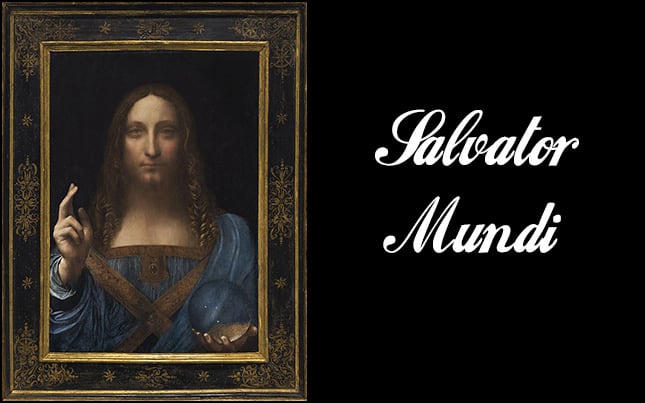Some in the art world may not know that the 500-year old masterpiece painting Salvator Mundi (“Savior of the World”) by Leonardo da Vinci that recently sold for nearly half a billion dollars is imperfect. The work with a shady history was damaged and heavily repainted and then restored. At least one well regarded Leonardo da Vinci expert went on record stating that he doesn’t believe the acclaimed artist was the primary artist behind the work. The painting was owned by King Charles I in the 17th century, disappeared from records from 1763 to 1900, resurfaced again in 1958, and sold for under $10,000 in 2005. Less than 10 years later, Russian billionaire Dmitry Rybolovlev brought the work to the market after purchasing it for $127.5 million in 2013.
Before the recent November 15, 2017 sale of the painting at Christie’s in New York, it was reported that Nica Rieppi, Principal Investigator at Art Analysis & Research, and her scientific team spent four years using the latest technology and a number of art books in authenticating the da Vinci work. The painting was meticulously analyzed down to a microscopic level in which the team took miniscule samples to determine the pigments, materials and techniques used in creating it. Technical imaging with x-rays, infrared and ultraviolet technology was also used by the team to assess how the painting developed with each stroke.
According to Rieppi, science is becoming more important than ever in the growing “high-stakes world of multimillion-dollar fine art sales” and the purpose is to “get inside the head of the artist.”
The masterpiece painting is a depiction of Christ draped in a blue robe holding one hand in prayer and a crystal sphere in the other and is said to be one of less than 20 paintings known to be created by the Italian master.
A significant clue in establishing the authenticity of the work derived from the composition of the paint. The scientific team, through microscopic sampling, detected the use of lapis lazuli, a very rare pigment considered more expensive than gold in Italy at the time, in “extraordinarily high quality” throughout the blue in Christ’s robe in the painting. The pigment was imported from the Middle East and the material was “so expensive and only available to someone of a master and stature as Leonardo,” explained Rieppi.
A further clue as to the authenticity of the work was the use of complex and sophisticated layering by the artist. Through the use of a powerful microscope, the scientific team discovered monochromatic layers that were applied to the canvas before the addition of the pigment. This included the use of a warm brown color on Christ’s robe along with transparent washes throughout the painting. Such details are said to be consistent with da Vinci’s technique in the unfinished work The Adoration of Magi. Rieppi believes there is no doubt that anyone other than da Vinci could have created the work due to the uniqueness of the painting at a microscopic level.
The complex history of the painting left many in the art world perplexed as to its provenance with some outright doubtful. In particular, Jacques Frank, an art historian and da Vinci specialist who had examined the work, said to the media that “[t]he composition doesn’t come from Leonardo. He preferred twisted movement. It’s a good studio work with a little Leonardo at best, and it’s very damaged.”
At the outset of authenticating the work, Rieppi and her scientific team approached the project with “doubt and skepticism” in view of the questionable history of the painting. However, the materials lined up and the techniques aligned to a point in which it became clear to Rieppi and her team about the origin and identity of the da Vinci masterpiece.
As for where Rieppi sees things heading in the art market, the authenticator believes that “[s]cience is allowing us to move toward evidence-based connoisseurship.”
